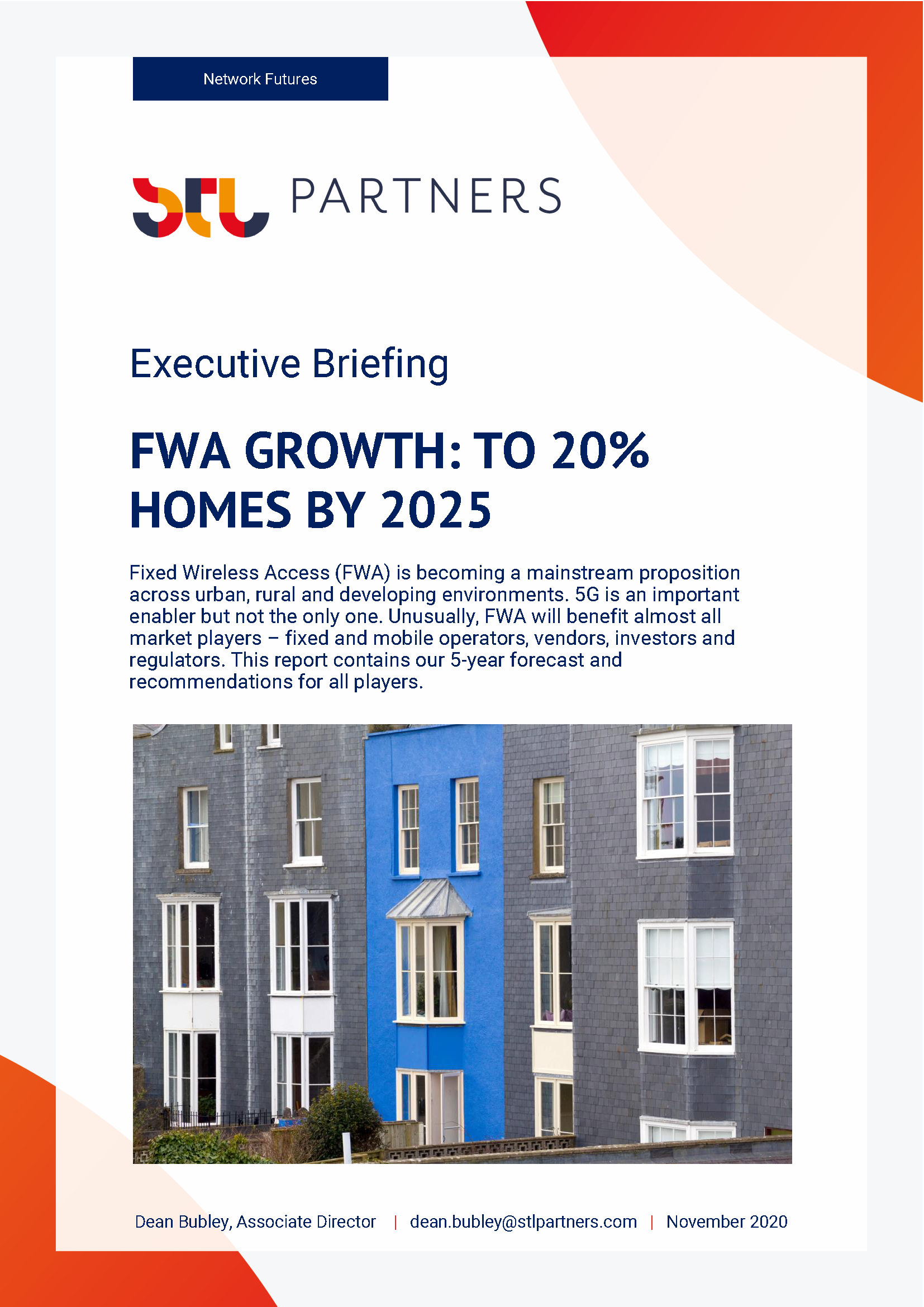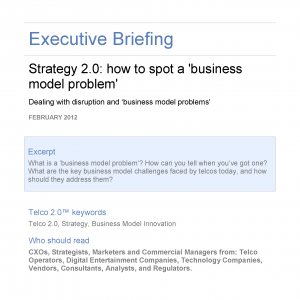Fixed wireless access growth: To 20% homes by 2025
£1,000.00 excl VAT
Fixed Wireless Access (FWA) is becoming a mainstream proposition across urban, rural and developing environments. 5G is an important enabler but not the only one. Unusually, FWA will benefit almost all market players – fixed and mobile operators, vendors, investors and regulators. This report contains our 5-year forecast and recommendations for all players.
Description
Format: PDF filePages: 55 pagesCharts: 22Author: Dean BubleyPublication Date: November 2020
Table of contents
-
- Executive Summary
- Introduction
- FWA today
- Universal broadband as a goal
- What’s changed in recent years?
- What’s changed because of the pandemic?
- The FWA market and use cases
- Niche or mainstream? National or local?
- Targeting key applications / user groups
- FWA technology evolution
- A broad array of options
- Wi-Fi, WiMAX and close relatives
- Using a mobile-primary network for FWA
- 4G and 5G for WISPs
- Other FWA options
- Customer premise equipment: indoor or outdoor?
- Spectrum implications and options
- The new FWA value chain
- Can MNOs use FWA to enter the fixed broadband market?
- Reinventing the WISPs
- Other value chain participants
- Is satellite a rival waiting in the wings?
- Commercial models and packages
- Typical pricing and packages
- Example FWA operators and plans
- STL’s FWA market forecasts
- Quantitative market sizing and forecast
- High level market forecast
- Conclusions
- What will 5G deliver – and when and where?
- Index
Table of Figures
-
- Figure 1: Using a broad definition, FWA will reach 21% of homes by 2026
- Figure 2: FWA market dynamics vary substantially by context and sector
- Figure 3: FWA service providers by type, 2018-2026
- Figure 4: Most countries now have national broadband plans
- Figure 5: A growing number of MNOs are offering FWA services
- Figure 6: Urban markets are much more challenging for FWA providers
- Figure 7: FWA fits specific sectors and uses, rather than the overall market
- Figure 8: Ericsson’s segmentation of 4G/5G FWA types
- Figure 9: FWA systems have a variety of on-premise equipment options
- Figure 10: Self-installed mmWave CPE may not be aesthetically pleasing
- Figure 11: FWA spectrum spans a range from 400MHz to 60GHz+
- Figure 12: The UK has a diverse set of independent FWA providers
- Figure 13: US WISPs typically see average usage of 100s of GB/month
- Figure 15: The WISP value chain is becoming much more diverse and complex
- Figure 15: Selected FWA packages and prices (Oct 2020)
- Figure 16: WISPs tend to price according to FWA speed / contention ratio
- Figure 17: Wyoming vs Sri Lanka – population density distributions
- Figure 18: Global broadband access lines, by technology, 2018-2026
- Figure 19: Using a broad definition, FWA will reach 21% of homes by 2026
- Figure 20: FWA lines, by technology, 2018-2026
- Figure 21: 4G FWA will still service more homes than 5G by 2026
- Figure 22: FWA service providers by type, 2018-2026
- Figure 22: FWA key market segments – summary
Keywords: 4G, 5G, AirBand, AirSpan, broadband wireless access, C-band, Cambium , Casa Systems, CBRS, CCS, cellular backup, cloud-based core networks, Comba, consumer SD-WAN, Converged, critical infrastructure, customer premise equipment, Dedicated FWA networks, DSL broadband, EPCs, external antenna, fibre rollout, fixed wireless access, FWA, geostationary (GEO) satellites, gigabit broadband, governments, Greenpacket, HAPS, High altitude platforms, hotspots, Indoor units, IoT, IPTV, LEO satellites, M2M, MDU, meta-materials, Mi-Fi, Midco, mmWave, mobile hotspots, multi-dwelling units, National Broadband Plans, Niche radio solutions, OneWeb, OpenRAN, Optus, point-to-point, Preseem, private networks, Project Kuiper, PtMP, PtP, Radwin, RDOF, Rise Broadband, Rural Digital Opportunity Fund, satellite broadband, spectrum access service, TV White Spaces, US Connect America Fund, Very Small Aperture Terminal, VPNs, VSAT, WFH, Wi-Fi, Wi-Fi6, WiFibre, WiMAX, wireless ISPs, WISPA, work from home, WTTX
Companies & technologies covered: 3 Sweden, 3 UK, Alphabet, Amazon, Askey, Aviat Networks, Baicells, BitCo, Blu Wireless, Blue Origin, Bluewave, BT, Commscope, Community Broadband Scotland, Connect America Fund (CAF) II, Doodle Labs, Cradlepoint, European Regional Development Fund, Ericsson, European Agricultural Fund for Rural Development, ExteNet Systems, Facebook, Globe, Google, Huawei, Microsoft, MicroTik, MTN, NEC, Nokia, Samsung, Siklu, SpaceX, Starlink, Starry, telenor, Telkom Kenya, Telrad, Terragraph, Tigo, Ubiquiti, Verizon, Vodafone, Wistron, Xplornet


